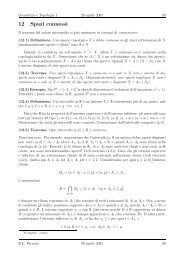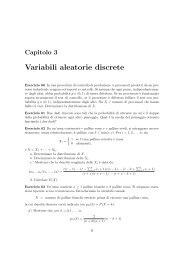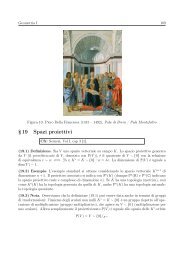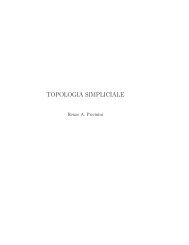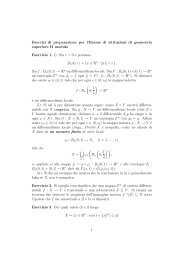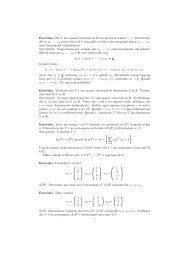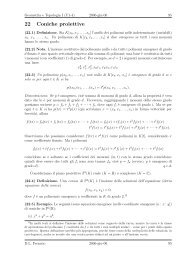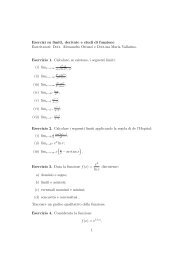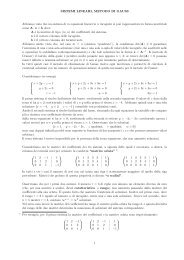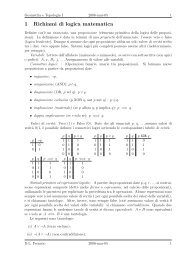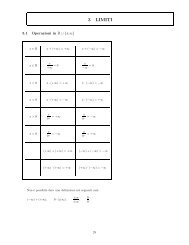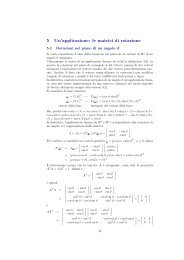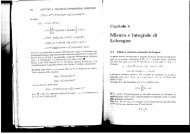Momenta of a vortex tangle by structural complexity analysis
Momenta of a vortex tangle by structural complexity analysis
Momenta of a vortex tangle by structural complexity analysis
You also want an ePaper? Increase the reach of your titles
YUMPU automatically turns print PDFs into web optimized ePapers that Google loves.
Author's personal copy2224 R.L. Ricca / Physica D 237 (2008) 2223–2227Fig. 1. The area A <strong>of</strong> the projected graph resulting from the projection p ν <strong>of</strong>a <strong>vortex</strong> line L on the plane Π is proportional to the component <strong>of</strong> the linearmomentum <strong>of</strong> L in the ν-direction.arc-length s. Vorticity ω is defined on L i , and is simply given <strong>by</strong>ω = ¯ωX ′ , where, in general, X = X(s, t) denotes the positionvector, ¯ω a constant and t ≡ X ′ the unit tangent to L i (the primedenoting the derivative with respect to s, and t is time). Thelinear momentum P = P(T ) corresponds to the hydrodynamicimpulse, which generates the motion <strong>of</strong> T from rest, and fromits standard definition [11] takes the formP = 1 ∫X × ωd 3 X = 1 N∑Γ i X × X2 T2i=1∫L ′ ds, (1)iwhere P is here intended per unit density, and Γ i representsthe circulation <strong>of</strong> L i . Similarly, for the angular momentumM = M(T ), that corresponds to the moment <strong>of</strong> the impulsiveforces acting on T ; we haveM = 1 ∫X × (X × ω)d 3 X3 T= 1 N∑Γ i X × (X × X3∫L ′ )ds, (2)ii=1where, again, M is intended per unit density. We remark thatunder both Euler’s equations and LIA, we havedPdt= 0,dMdt= 0. (3)2. Interpretation <strong>of</strong> momenta in terms <strong>of</strong> projected areaArms and Hama [8], who first proved the conservation <strong>of</strong>the integral on the right-hand side <strong>of</strong> Eq. (1) for a single <strong>vortex</strong>line, showed that this quantity admits interpretation in terms <strong>of</strong>projected area (see Fig. 1). Indeed, <strong>by</strong> direct inspection <strong>of</strong> theintegrand above, it is evident that under LIA the plane projectedarea <strong>of</strong> the <strong>vortex</strong> line is proportional to the component <strong>of</strong>the linear momentum <strong>of</strong> the <strong>vortex</strong> along the direction <strong>of</strong>projection.Let p = p ν denote the orthogonal projection onto the planeΠ along the direction ν, and L ν = p ν (L) be the graph diagram<strong>of</strong> a smooth space curve L under p ν . Evidently L ν depends onν. For the moment let L ν be a smooth planar curve with noself-intersections, but in general L ν will be a nodal curve withself-intersections, the latter resulting from the projection <strong>of</strong> theapparent crossings <strong>of</strong> L, when L is viewed along the line <strong>of</strong>sight ν.By identifying the <strong>vortex</strong> line with its geometric support L,the projected graph diagram L ν will be oriented, the orientationbeing naturally induced <strong>by</strong> the vorticity vector. Let L xy , L yz ,L zx be the three graph diagrams <strong>of</strong> the projected <strong>vortex</strong> lineonto the mutually orthogonal planes x = 0, y = 0, z = 0,and let A xy = A(L xy ), A yz = A(L yz ), A zx = A(L zx ) be thecorresponding areas <strong>of</strong> the plane regions bounded <strong>by</strong> L xy , L yz ,L zx , respectively.By applying the results <strong>of</strong> Arms and Hama [8], from (1) wehaveP xy = Γ A xy , P yz = Γ A yz , P zx = Γ A zx , (4)where Γ is <strong>vortex</strong> circulation. Moreover:Definition 2.1. The resultant area A max is the maximal areaobtained <strong>by</strong> max ν p(A) = p max (A) (along the resultant axisν max ) among all possible projected areas A.The direction <strong>of</strong> the resultant axis ν max is clearly that <strong>of</strong> thelinear momentum. Hence, also from [8], we haveTheorem 2.2 (Maximal Area Interpretation). The resultantlinear momentum <strong>of</strong> a <strong>vortex</strong> line L, <strong>of</strong> circulation Γ , underLIA is given <strong>by</strong> P = Γ A max ν max , where A max is the resultantarea. The projected area <strong>of</strong> L on any plane perpendicular tothat <strong>of</strong> the resultant area is zero.Similar results hold true for the angular momentum. Withreference to the right-hand side <strong>of</strong> Eq. (2), the second integralcan be interpreted in terms <strong>of</strong> areal moment, according to thefollowing definition:Definition 2.3. The areal moment around any axis is theproduct <strong>of</strong> the area A multiplied <strong>by</strong> the distance d betweenthat axis and the axis a G , normal to A through the centroidG <strong>of</strong> A.For a <strong>vortex</strong> line L, the centroid G <strong>of</strong> the projected area A isthe center weighted with respect to the vorticity distribution <strong>of</strong>L. As for the linear momentum, the components <strong>of</strong> the angularmomentum are determined <strong>by</strong> the areal moments:M xy = Γ d z A xy , M yz = Γ d x A yz , M zx = Γ d y A zx , (5)where evidently d x , d y , d z are the distances between therotational axis and the centroid axes through A yz , A zx , A xy ,respectively. Similar considerations apply to define the resultantareal moment <strong>of</strong> L:Definition 2.4. The resultant areal moment <strong>of</strong> L is the arealmoment around the resultant axis a G <strong>of</strong> the projected areas <strong>of</strong>L onto two mutually orthogonal planes, parallel to a G .⋃These observations are easily extended to a <strong>tangle</strong> T =i L i <strong>of</strong> N <strong>vortex</strong> lines L i , provided we carefully define the



